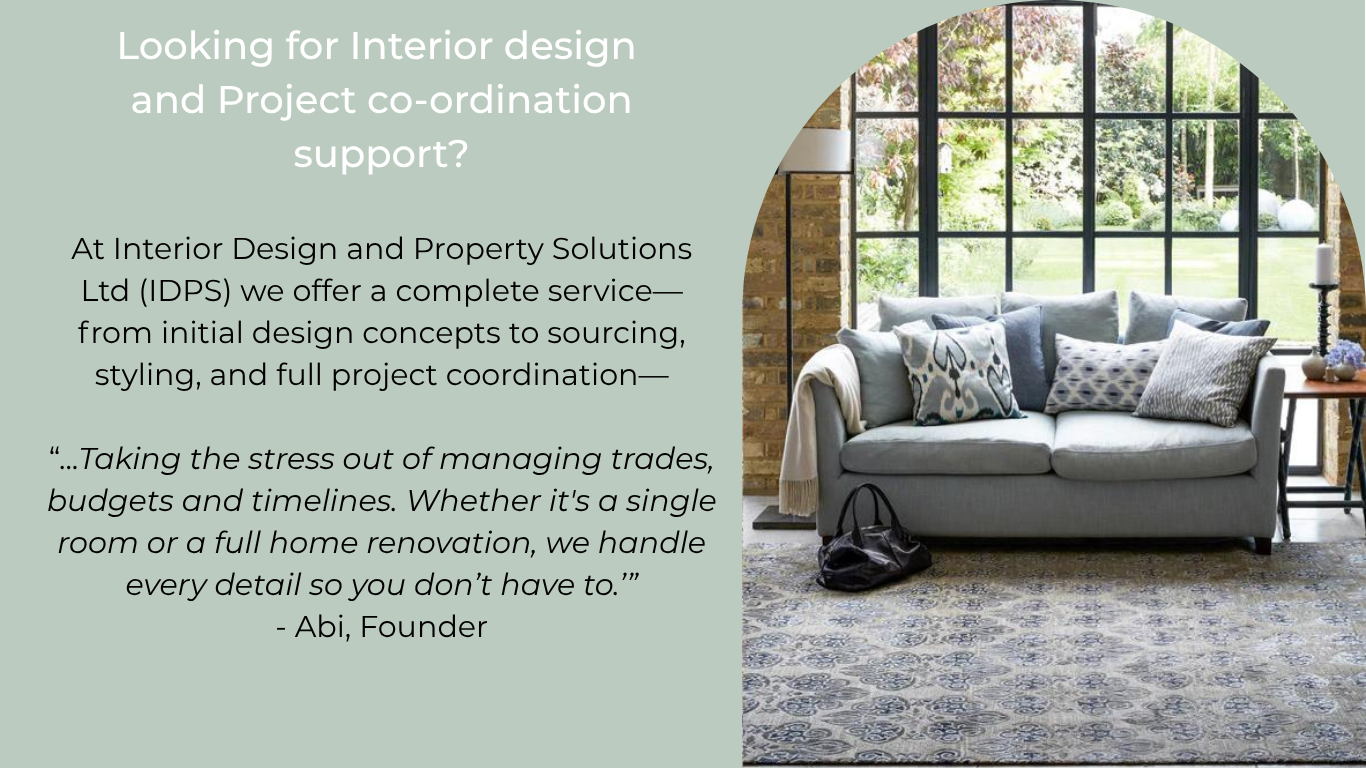Bespoke vs. Mass-Produced Furniture in Interior Design: A Comprehensive Guide for 2025
Hello from Abi at Interior Design and Property Solutions (IDPS) in Devon!
If you're embarking on a journey to transform your home, understanding the nuances between bespoke and mass-produced furniture is essential. In 2025, homeowners are increasingly seeking pieces that not only enhance their living spaces but also reflect their unique personalities and values. This guide delves into the advantages of bespoke furniture, offering insights into how it can elevate your home and align with contemporary design trends.
Understanding Bespoke Furniture
Bespoke furniture refers to custom-made pieces crafted to meet specific design preferences, spatial requirements, and functional needs. Unlike mass-produced items, bespoke furniture is tailored to fit your home's unique characteristics, ensuring a harmonious integration with your interior design.
Advantages of Bespoke Furniture
Tailored Fit for Unique Spaces
Many homes, especially older properties in Devon, feature unconventional layouts with alcoves, sloping ceilings, or irregular room dimensions. Bespoke furniture can be designed to fit these unique spaces perfectly, optimising functionality and aesthetics. For instance, a custom-built bookshelf can be created to fit an awkward corner, utilizing every inch of space effectively.
Personalised Design and Style
Bespoke furniture offers the opportunity to infuse your personal style into your home. From selecting materials and finishes to choosing colors and textures, you have complete control over the design process. This personalisation ensures that each piece resonates with your taste and complements the overall theme of your interior.
Sustainability and Ethical Production
In an era where sustainability is paramount, bespoke furniture often stands out as an eco-friendly choice. Many artisans prioritise using locally sourced, sustainable materials, reducing the carbon footprint associated with transportation. Additionally, bespoke pieces are crafted to last, minimising waste and the need for frequent replacements. Supporting local craftsmen also promotes ethical production practices and preserves traditional skills.
Long-Term Investment
While the initial cost of bespoke furniture may be higher than mass-produced alternatives, its durability and timeless design make it a worthwhile investment. High-quality materials and expert craftsmanship ensure that bespoke pieces can withstand the test of time, both functionally and stylistically.
Enhanced Functionality
Bespoke furniture can be designed to meet specific functional needs, such as incorporating hidden storage solutions, accommodating built-in appliances, or creating multi-purpose furniture for compact spaces. This level of customisation enhances the usability of your home, making it more efficient and comfortable.
The Limitations of Mass-Produced Furniture
Mass-produced furniture, often characterised by its affordability and wide availability, may seem appealing. However, it comes with certain limitations:
Limited Customisation
Mass-produced items offer limited options in terms of design, materials, and finishes. This lack of customisation can result in furniture that doesn't align with your personal style or the unique characteristics of your home.
Quality Concerns
To keep costs low, mass-produced furniture is often made using cheaper materials and manufacturing processes. This can lead to issues such as reduced durability, wear and tear, and a shorter lifespan compared to bespoke pieces.
Environmental Impact
The mass production of furniture can contribute to environmental degradation. The use of non-sustainable materials, energy-intensive manufacturing processes, and the prevalence of fast furniture culture lead to increased waste and resource depletion.
Generic Aesthetics
Mass-produced furniture tends to follow current trends, which can result in interiors that lack individuality. Homes furnished with identical pieces may lack the character and warmth that come with unique, custom-designed furniture.
Incorporating Bespoke Furniture into Modern Homes
Integrating bespoke furniture into your home can elevate its design and functionality. Here are some considerations:
Assess Your Space
Begin by evaluating your home's layout and identifying areas where bespoke furniture can enhance functionality. For example, custom cabinetry can be designed to fit awkward alcoves, while tailored seating arrangements can optimise living areas.
Define Your Style
Consider the overall aesthetic you wish to achieve. Whether you prefer contemporary, rustic, or eclectic designs, bespoke furniture can be crafted to reflect your personal style and complement existing décor.
Collaborate with Skilled Artisans
Work with experienced craftsmen who can bring your vision to life. Collaborating with local artisans in Devon ensures that your furniture is not only of high quality but also supports the local economy.
Prioritise Sustainability
Choose materials that are sustainably sourced and durable. Opting for eco-friendly finishes and construction methods reduces your environmental impact and ensures that your furniture lasts for years.
Plan for the Future
Consider the long-term benefits of investing in bespoke furniture. Its durability, timeless design, and personalised nature make it a valuable addition to your home that can be enjoyed for generations.
Summary
Choosing bespoke furniture over mass-produced alternatives offers numerous advantages, from personalised design and enhanced functionality to sustainability and long-term investment. By carefully considering your space, style, and values, you can create a home that reflects your individuality and stands the test of time.
At IDPS, we're here to guide you through the process of selecting and integrating bespoke furniture into your home. Whether you're embarking on a full renovation or seeking to add unique pieces to your existing décor, our expertise ensures that your vision becomes a reality. Contact us today to begin your journey toward a more personalised and sustainable living space.






